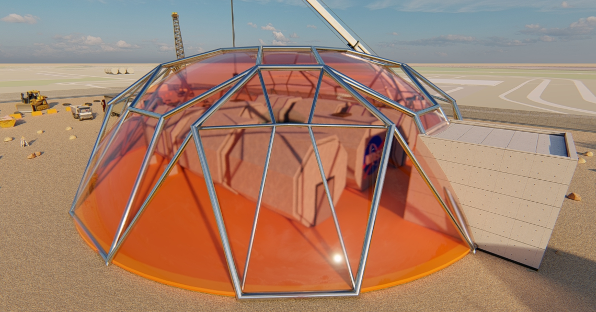Mission to Mars

Abstract
EcoNova Engineering was tasked with designing an Earth-Based Mars Simulator for a 30-day short-surface stay. This project came from RASC-AL and NASA’S 2020 project themes. The goal was to design a fully self-sufficient structure on Earth that simulates Mars’ environment and living conditions. The testing site is located on the property of Florida Atlantic University. The property has a command center that ensures proper monitoring of the life support systems inside the simulator modules, as well as supervises the overall physical and mental health of the trainees. EcoNova’s design consists of a dome which houses the simulator and mimic Mar’s terrain. The simulator allows the astronauts in-training to prepare for the 2035 Mission to Mars by allowing them to experience what living on the barren planet is going to be like. Once the experiment has concluded, the objective is to send the same modules designed on Earth to Mars. The modules will be equipped to handle food, human waste, water, and shelter for the astronauts. EcoNova hopes this design will accommodate the astronaut’s needs and that they will be able to gather crucial information when they arrive on Mars in 2035.




